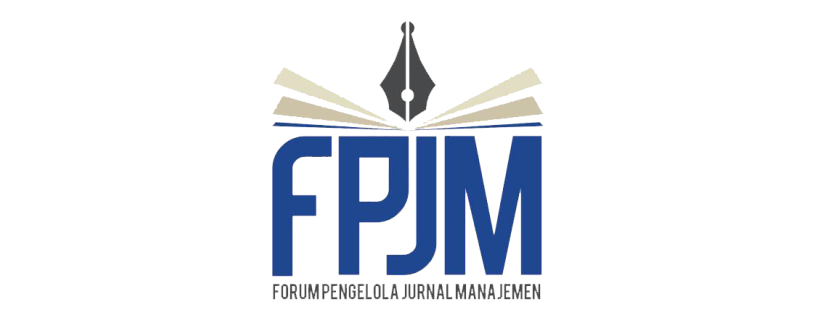“COSO†Internal Control Analysis on Account Receivable (Case Study in Astra Sedaya Finance Branch Cirebon)
DOI:
https://doi.org/10.26905/jmdk.v8i1.4189Keywords:
Account Receivable, Internal Control System of Model “COSOâ€Abstract
The purpose of this study is to determine the internal control system of accounts receivable, and to determine whether internal control analysis of model “COSO†on Account Receivable has been implemented at PT. Astra Sedaya Finance branch Cirebon. Primary & secondary data are analyzed based on the components of internal control established by the Committee of Sponsoring Organizations (COSO). The components of internal control that will be analyzed in this study, and then have 5 (five) element: 1) Control Environmental, 2) Risk Assessment,       3) Control Activities,     4) Information and Communication, and 5) Monitoring Activities. Research result Internal Control of accounts receivable at the Astra Sedaya Finance Cirebon Branch had been found effective, where the company's management had adopted the basic concepts and principles of internal control by standard operating procedures that had been set by the company. The overall system of internal control over accounts receivable at the Astra Sedaya Finance was effective enough, where management had implemented the principles of internal control in accordance with COSO, but there has been a weakness that the company still had not been put on the application system for recording and completion of documents receivable for companies in which still using manual computerized.
https://doi.org/10.26905/jmdk.v8i1.4189
Â
Downloads
References
ACCelerate. (2011). ACCelerate (8 Ed.).
Desantirahayu. (2017). Analisis Pengendalian Intern Model "COSO" terhadap Piutang Usaha. Akademika, 15(1).
Fahmi, I. (2016). Manajemen Sumber Daya Manusia. Yogyakarta: Alfabeta.
Hery. (2013). Auditing Pemeriksaan Akuntansi 1 Cetakan Pertama. Jakarta: Caps (Center of Academic Publishing Service).
Iia, A. (2013). Organisasi Profesi Pendiri Kajian Coso (Committee of Sponsoring Organization). Amerika Serikat.
Ikatan Akuntansi Indonesia (IAI). (2015). Standar Akuntansi Keuangan. Psak No. 9: Penyajian Aktiva Lancar dan Kewajiban Jangka Pendek. Jakarta: Salemba Empat.
Janvrin, D., And E. Payne. (2012). The Updated COSO Internal Control Integrated Framework: Recomendations And Opportunities For Future Reasearch. Journal of Information Systems, 26 (2)
Klamm, B. K., And M. W. Watson. (2009). Sox 404 Reported Internal Control Weaknesses: A Test of COSO Framework Components and Information Technology. Journal Of Information Systems (23) 2, 1-23.
Mulyadi. (2014). Auditing (6 Ed.). Jakarta: Salemba Empat.
Mulyadi. (2016). Sistem Akuntansi (4 Ed.). Jakarta: Salemba Empat.
Pontoh, W. (2013). Akuntansi Konsep dan Aplikasi. Jakarta: Penerbit.
Runtu, E. (2016). Analisis Pengendalian Intern Piutang Usaha Pada PT Bussan Auto Finance (Baf) Manado. Jurnal Emba, (4).1, 536-545.
Santoso, P. (2012). Evaluasi Penerapan Internal Control Berdasarkan Kerangka Coso Pada Divisi Kartu Kredit Di Bank "X". Jurnal Ilmiah, Universitas Surabaya, 1 (1)
Schneider, K., And L. Becker. (2011). Using The Coso Model of Internal Control as A Framework for Ethics Initiatives In Business School. Journal Of Academic And Business Ethics, East Tennessee State University
Singal, T. (2015). Analisis Pengendalian Intern Piutang Usaha Pada Delevoper Branch Kawanua International City. Jurnal Emba, (3)1, 286-296.
Syakur, A. (2015). Intermediate Accounting. Jakarta: Av Publisher.
Taroreh, W. (2016). Evaluasi Penerapan Sistem Pengendalian Internal Piutang Pada PT Mandiri Tunas Finance Cabang Mando. Jurnal Emba, 4(3), 125-134.
Tjodi, S. (2017). Analisis Sistem Pengendalian Internal Piutang Usaha Pada PT. Bank Sulutgo Kcp Ranotama. Jurnal Emba, 5 (2), 857-866.
Tuanakotta. (2015). Audit Kontemporer . Jakarta: Salemba Empat.
Downloads
Published
Issue
Section
License
Authors who publish with this journal agree to the following terms:
(1)Â Copyright of the published articles will be transferred to the journal as the publisher of the manuscripts. Therefore, the author confirms that the copyright has been managed by the journal.
(2) Publisher of Jurnal Penelitian is University of Merdeka Malang.
(3) The copyright follows Creative Commons Attribution–ShareAlike License (CC BY SA): This license allows to Share — copy and redistribute the material in any medium or format, Adapt — remix, transform, and build upon the material, for any purpose, even commercially.












